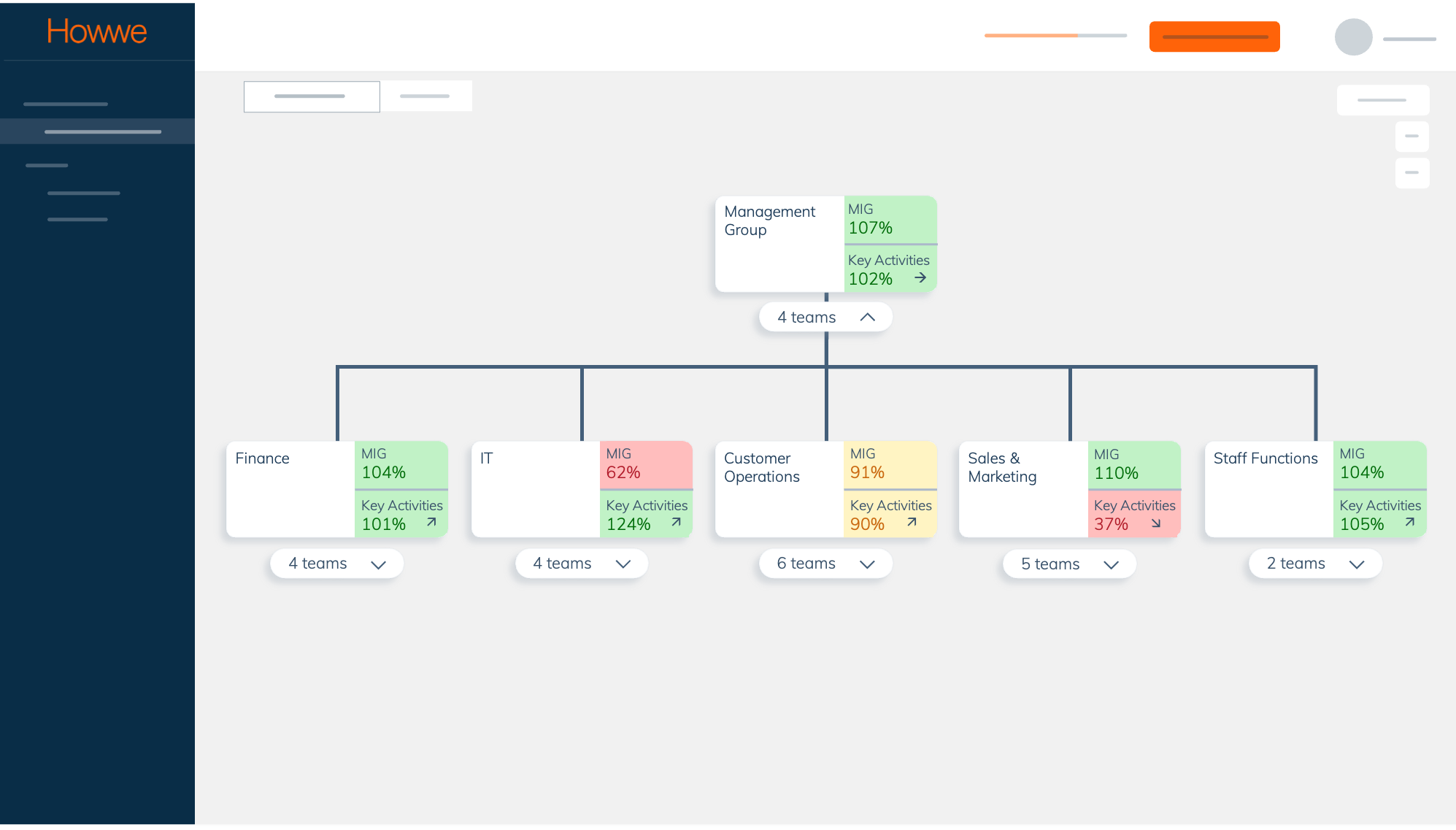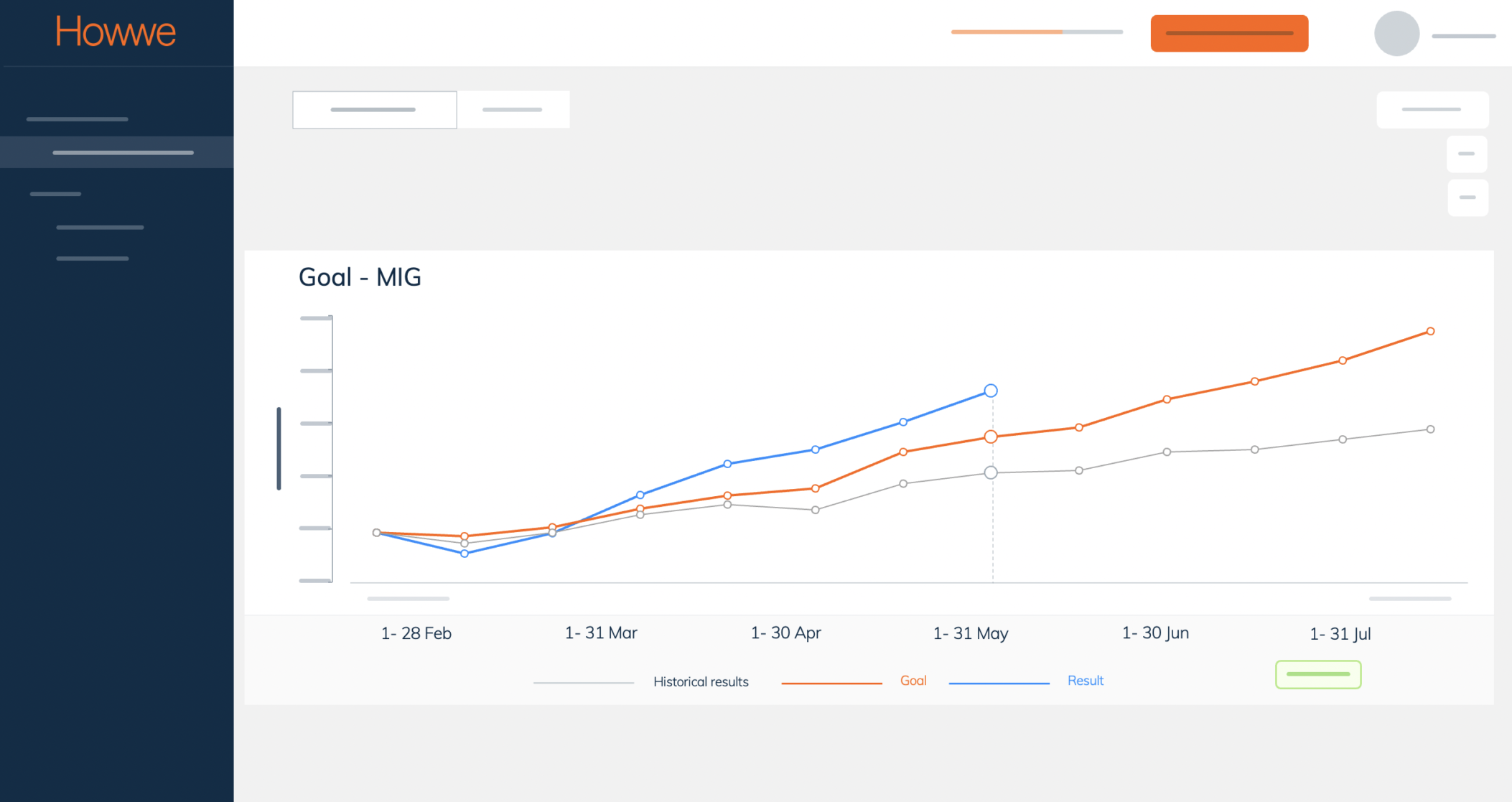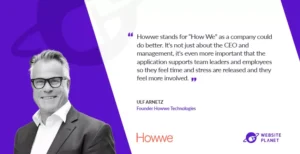The dashboard is a very powerful tool to keep the momentum and engagement going throughout the company.
What does the dashboard show?
- It measures both results (MIG) and progress (Key Activitiy).
- It shows how each department is doing
- It shows how the company as a whole is doing
- It gives a picture of the status of each department and it makes it easy to see where measures are necessary.
- It shows whether today/this week is winning or losing compared to the strategic plan
 When one department shows red or yellow in the dashboard, the CEO’s task is to ensure that steering and follow-up take place according to plan. Apart from this, the CEO’s most important function is to — with a positive and encouraging attitude — ask the leader and the team what kind of support they need to turn this trend around. The worst thing a CEO can do is to make scapegoats of the team when things are not going well. This will make motivation disappear in a flash. The CEO cannot start micro-managing in order “to help”. Strategy acceleration is based on the team defining their own activities and taking responsibility for how they are carried out. The CEO and management group have to make clear that this is also the case when things are not going according to plan. The team holds the solution, the CEO and management are only there to support.
When one department shows red or yellow in the dashboard, the CEO’s task is to ensure that steering and follow-up take place according to plan. Apart from this, the CEO’s most important function is to — with a positive and encouraging attitude — ask the leader and the team what kind of support they need to turn this trend around. The worst thing a CEO can do is to make scapegoats of the team when things are not going well. This will make motivation disappear in a flash. The CEO cannot start micro-managing in order “to help”. Strategy acceleration is based on the team defining their own activities and taking responsibility for how they are carried out. The CEO and management group have to make clear that this is also the case when things are not going according to plan. The team holds the solution, the CEO and management are only there to support.
What to do when acceleration does not go according to plan?

Support tools for strategy acceleration follow-up
- Continuous visualization of results
- Summarization of all team results at an aggregated company level
- Measurement of historical data
- Display of the goal
- Ability to enter activities to be achieved
- Measurement of progress, ensuring that every partial improvement actually takes place
How much time do you spend on each activity?
The length of time an activity should take varies. Anywhere from a couple of weeks to a couple of months. Our advice is to have as short time periods as possible. This helps you focus.Reward acceleration, not only results
In most companies, managers and staff are rewarded for what has already happened, i.e. the end result/outcome. The reward can affect career or salary, or come in the form of commission or bonus. We think this is a reason why everyone keeps working in the whirlwind and only has time for the operational work — since this is what is rewarded, and what is rewarded gets done. If you want to succeed with your strategy you have to reward the strategy work. Reflect on how your reward system works today. How can you create one that rewards the real strategy work? From the acceleration meetings you get weekly reports on progress—reward those who stick to the plan. Remember that reward is not only money. It is as important with verbal feedback and the way we talk to and encourage each other within the organization.Acceleration Meeting summary
We have now ventured deep into strategy acceleration. You now have the knowledge and tools, among others the dashboard, to truly achieve the activities. By now a lot of things have happened within the organization — it is bubbling with energy and the atmosphere has tangibly changed. The result of all the work is probably already visible in the “bottom line”. Employees and managers feel content, there is positive energy around the strategy work that can be felt within the whole organization, and the sense that a lot is being achieved prevails. This is when it is important to continue on the path and have the strength and stamina to keep going.
More To Explore
Howwe Technologies AB (publ) stands at the forefront of SaaS innovation as the creators
of Howwe, the Solution for Growth.
With our method and software, we simplify the
execution of strategy. Empowering businesses globally, we’re committed to redefining
strategy execution and driving sustainable financial growth.
Howwe
Insights
Contact Us
Howwe Technologies
[email protected]
Org. nr. 556655-7509
New York City Office
135 West 50th Street, 2nd Floor,
New York, NY, 10019
Stockholm Office
Malmskillnadsgatan 29
111 57 Stockholm
08-243 110
Box: 270 40.
102 51 Stockholm





